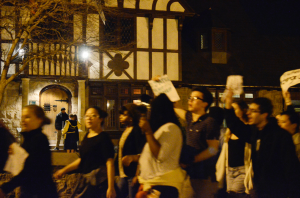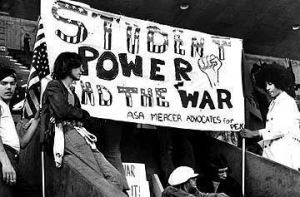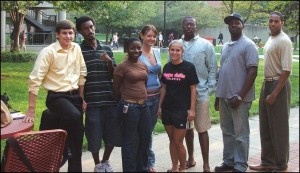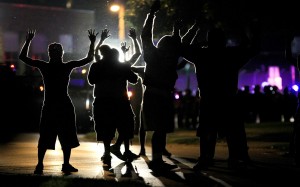It is time to talk about campus activism. On November the 25th, the announcement was made that Darren Wilson, the Ferguson police officer who shot and killed Michael Brown, would not be indicted. College students across the country spared no time in displaying their vexation as there have been no shortage of protests, sit-ins and walkouts. Students have taken to the quad with their hands up and have gathered inside and in front of administration buildings. Others have stiffly laid down on the ground of student activity centers while student leaders have taken to any available podium to deliver fiery soliloquies on the value of black lives. It appears the spirit of activism is alive on the college campus once again.
While this generation has the Ferguson Decision to rally around, campus activism is nothing new. The 1960’s saw numerous protests in opposition to the Vietnam War while the late 2000’s saw student disapproval to the War in Iraq. While campus activism doesn’t necessarily have to be focused on worldwide or national issues (tuition increases always seem to spark at least a petition), this writer distinctly remembers the activities that took place on his campus in regards to Hurricane Katrina.
In August of 2005, Hurricane Katrina literally tore apart New Orleans. The issue that led Kanye West to declare that “George Bush doesn’t care about black people” however, was the government’s lackluster response to the tragedy. As the Interfraternity Council president, I was part of a collation designed to provide aid to evacuees. These efforts started out wonderfully with a front page article in the September 13th, 2005 edition of the campus newspaper. 14 days later, the efforts all but stopped as the headline “Student Participation in Relief Efforts For Katrina Victims, Lower Than Group Expected” replaced the words of activism and calls to action that graced the cover just two weeks earlier. While attending rallies and providing sound bites were easy enough, campus interest began wane once the time for action came. By October there more effort was given to selecting Halloween costumes than participating in food drives.
In no way is this article suggesting that demonstrations are frivolous. On the contrary, demonstrations are an extremely important tool in the process of “change”, as they are key for bringing attention to a situation. A student may not be aware of the fact that tuition is increasing until he passes by a group of protestors on the way to the student activity center and reads their signs or their leaflets. With social media being so engrained in our lives, many students become aware of issues online. However, while Twitter may be the new CNN, students must not let college activism die after 140 characters.
While demonstration is important, it is only the first step. The real change comes once the TV and newspaper cameras have been shut off. If demonstration is where change begins, then action is where change happens. Now that you have the masses behind your cause, what action will you take to make real change? In the current Ferguson issue, there is a plethora of action that one can initiate. Perhaps action is working with local law enforcement to host a campus workshop where students can learn their rights and proper procedure when interacting with officers. Maybe action is you and your brothers or sisters volunteering as a peer mentors for younger students on the high school and middle school level. Then again, action could take the form of you and your dorm mates creating or participating in existing after-school activities to provide a safe environment for younger students to seek refuge in. Or perhaps action looks like something completely different than all of this. The point is, while demonstration serves as a great reactionary response, it is action that will continue to spread the message past the first 14 days and will ultimately lead to the change which one seeks.




